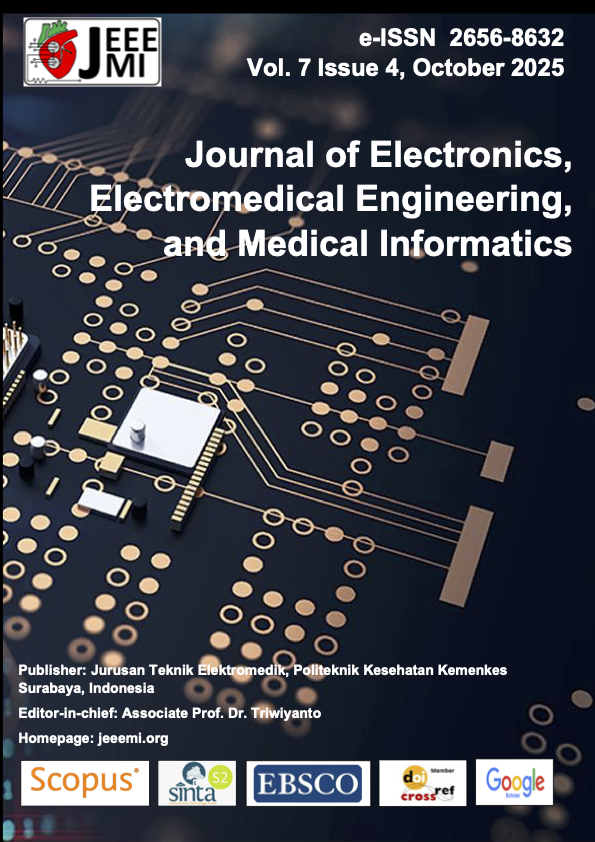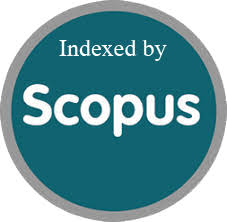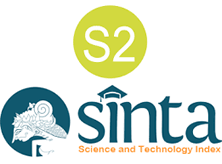Secure Image Transmission using Quantum-Resilient and Gate Network for Latent-Key Generation
Abstract
Recently, deep learning-based techniques have undergone rapid development, yielding promising results in various fields. For making more complex operations in day-to-day tasks, the arbitrary resolution of JPEG image data security requires more than just deep learning in this modern era. To overcome this, our research introduces a pioneering synergistic framework for a quantum-resistant deep learning technique, which is expected to provide next-generation robust security in the dynamic resolution of multi-JPEG-image-based joint compression-encryption. Our proposed framework features dual-parallel processing of a dynamic gate network, utilizing a convolutional neural network for specialization detailing and quantum-inspired transformations. These transformations leverage Riemann zeta functions for depth feature extraction, integrated with a chaotic sequence and dynamic iterations to generate a latent-fused chaotic key for image joint compression and encryption. Further, the authenticity of an encrypted image that is bound by a secure pattern derived from a random transform variance anchors cryptographic operations. Then, bound data transmitted through a Synergic Curve Key Exchange Engine fused with renowned Chen attractors to generate non-invertible keys for transmission. Finally, experimental results of the image reconstruction quality measured by the structural similarity index metric were 98.82 1.12. Security validation incorporates different metrics by addressing the entropy analysis to quantify resistance against differential and statistical attacks, with a yield of 7.9980 0.0015. In conclusion, the whole implementation uniquely combines latent-fused chaotic with improved key space analysis for discrete cosine transform quantization with authenticated encryption, establishing an adversarial-resistant pipeline that simultaneously compresses data and validates integrity through pattern-bound authentication
Downloads
References
Y. Yuan, H. He, F. Chen, and L. Qu, “On the security of JPEG image encryption with RS pairs permutation,” Journal of Information Security and Applications, vol. 82, p. 103722, Mar. 2024.
H. He, Y. Yuan, Y. Ye, H.-M. Tai, and F. Chen, “Chosen plaintext attack on JPEG image encryption with adaptive key and run consistency,” Journal of Visual Communication and Image Representation, vol. 90, p. 103733, Dec. 2022.
S. J. Mousavirad and L. A. Alexandre, “Energy-aware JPEG image compression: A multi-objective approach,” Applied Soft Computing, vol. 141, p. 110278, Apr. 2023.
Z. Li et al., “Nearly-lossless-to-lossy medical image compression by the optimized JPEGXT and JPEG algorithms through the anatomical regions of interest,” Biomedical Signal Processing and Control, vol. 83, p. 104711, Feb. 2023.
Z. Li et al., “An optimized JPEG-XT-based algorithm for the lossy and lossless compression of 16-bit depth medical image,” Biomedical Signal Processing and Control, vol. 64, p. 102306, Nov. 2020.
I. Perfilieva and P. Hurtik, “The F-transform preprocessing for JPEG strong compression of high-resolution images,” Information Sciences, vol. 550, pp. 221–238, Oct. 2020.
G. Li, Q. Huang, W. Wang, and L. Liu, “Human visual perception-inspired medical image segmentation network with multi-feature compression,” Artificial Intelligence in Medicine, vol. 165, p. 103133, Apr. 2025.
S. Jeong, S. Jeong, S. S. Woo, and J. H. Ko, “An overhead-free region-based JPEG framework for task-driven image compression,” Pattern Recognition Letters, vol. 165, pp. 1–8, Nov. 2022.
X. Duan, B. Li, Z. Yin, X. Zhang, and B. Luo, “Robust image steganography against lossy JPEG compression based on embedding domain selection and adaptive error correction,” Expert Systems With Applications, vol. 229, p. 120416, May 2023.
I. Hussain, S. Tan, B. Li, X. Qin, D. Hussain, and J. Huang, “A novel deep learning framework for double JPEG compression detection of small size blocks,” Journal of Visual Communication and Image Representation, vol. 80, p. 103269, Aug. 2021.
M. Rahmati, F. Razzazi, and A. Behrad, “Double JPEG compression detection and localization based on convolutional auto-encoder for image content removal,” Digital Signal Processing, vol. 123, p. 103429, Feb. 2022.
W. Tan, Y. Bao, F. Meng, C. Li, and Y. Liang, “Adaptive cross-channel transformation based on self-modulation for learned image compression,” Signal Processing Image Communication, p. 117325, Apr. 2025.
T. Ma, J. Ye, Z. Xu, and J. Zhao, “Image Encryption Algorithm based on Pseudo-random Sequence,” Procedia Computer Science, vol. 243, pp. 1231–1238, Jan. 2024.
M. Li, Q. Cui, X. Wang, Y. Zhang, and Y. Xiang, “FTPE-BC: Fast thumbnail-preserving image encryption using block-churning,” Expert Systems With Applications, vol. 255, p. 124574, Jun. 2024.
Y. Yuan, H. He, Y. Yang, N. Mao, F. Chen, and M. Ali, “JPEG image encryption with grouping coefficients based on entropy coding,” Journal of Visual Communication and Image Representation, vol. 97, p. 103975, Nov. 2023.
Q. Feng et al., “DHAN: Encrypted JPEG image retrieval via DCT histograms-based attention networks,” Applied Soft Computing, vol. 133, p. 109935, Dec. 2022.
W. Chen, W. Ji, Y. Wang, J. Ren, G. Sheng, and X. Hei, “Visually secure image encryption: Exploring deep learning for enhanced robustness and flexibility,” Expert Systems With Applications, p. 126027, Dec. 2024.
C. Wang and L. Song, “An image encryption scheme based on chaotic system and compressed sensing for multiple application scenarios,” Information Sciences, vol. 642, p. 119166, May 2023.
X. Li, B. Zhang, K. Wang, and Z. Li, “A multi-image encryption-then-compression scheme based on parallel compressed sensing,” Optik, vol. 290, p. 171304, Aug. 2023.
D. Huo et al., “A flexible and visually meaningful multi-image compression, encryption and hiding scheme based on 2D compressive sensing,” Heliyon, vol. 9, no. 3, p. e14072, Feb. 2023.
H. Wen, Y. Huang, and Y. Lin, “High-quality color image compression-encryption using chaos and block permutation,” Journal of King Saud University - Computer and Information Sciences, vol. 35, no. 8, p. 101660, Jul. 2023.
A. Bencherqui et al., “Optimal algorithm for color medical encryption and compression images based on DNA coding and a hyperchaotic system in the moments,” Engineering Science and Technology an International Journal, vol. 50, p. 101612, Jan. 2024.
K. Meng and Y. Wo, “An image compression and encryption scheme for similarity retrieval,” Signal Processing Image Communication, vol. 119, p. 117044, Aug. 2023.
Z. Zhang, Y. Cao, H. Jahanshahi, and J. Mou, “Chaotic color multi-image compression-encryption/ LSB data type steganography scheme for NFT transaction security,” Journal of King Saud University - Computer and Information Sciences, vol. 35, no. 10, p. 101839, Nov. 2023.
B. Wang and K.-T. Lo, “Autoencoder-based joint image compression and encryption,” Journal of Information Security and Applications, vol. 80, p. 103680, Dec. 2023.
K. Mishra, S. K. Singh, and P. Nagabhushan, “Prime product encoding for lossless compression and encryption of multiple images,” 2021 IEEE 8th Uttar Pradesh Section International Conference on Electrical, Electronics and Computer Engineering (UPCON), pp. 1–7, Nov. 2024.
M. Tang, G. Du, and Y.-Y. Lin, “A novel multi-color image compression encryption algorithm based on the reconstruction coefficient matrix and DNA point mutation operation,” Expert Systems With Applications, vol. 270, p. 126620, Jan. 2025.
N. Priyanka, N. Baranwal, K. N. Singh, and A. K. Singh, “YOLO-based ROI selection for joint encryption and compression of medical images with reconstruction through super-resolution network,” Future Generation Computer Systems, vol. 150, pp. 1–9, Aug. 2023.
Z. Chen, Y. Liu, G. Ke, J. Wang, W. Zhao, and S.-L. Lo, “A Region-Selective Anti-compression image encryption algorithm based on deep networks,” International Journal of Computational Intelligence Systems, vol. 17, no. 1, May 2024.
X.-D. Liu et al., “Quantum image encryption algorithm based on four-dimensional chaos,” Frontiers in Physics, vol. 12, Mar. 2024.
L. Liu, C. Yin, and Y. Dong, “A quantum image encryption scheme based on quantum Arnold transform and hyper 5D chaotic system,” Journal of Applied Physics, vol. 137, no. 16, Apr. 2025.
Y.-J. Gao, H.-W. Xie, J. Zhang, and H. Zhang, “A novel quantum image encryption technique based on improved controlled alternated quantum walks and hyperchaotic system,” Physica a Statistical Mechanics and Its Applications, vol. 598, p. 127334, Apr. 2022.
R. K. Singh, B. Kumar, D. K. Shaw, and D. A. Khan, “Level by level image compression-encryption algorithm based on quantum chaos map,” Journal of King Saud University - Computer and Information Sciences, vol. 33, no. 7, pp. 844–851, Jun. 2018.
S. Balasubramani, P. N. Renjith, L. Kavisankar, R. Rajavel, M. Malarvel, and A. Shankar, “A quantum-enhanced artificial neural network model for efficient medical image compression,” IEEE Access, p. 1, Jan. 2025.
D. R. I. M. Setiadi, N. Rijati, A. R. Muslikh, B. V. Indriyono, and A. Sambas, “Secure image communication using Galois Field, Hyper 3D Logistic Map, and B92 Quantum Protocol,” Computers, Materials & Continua/Computers, Materials & Continua (Print), vol. 0, no. 0, pp. 1–10, Jan. 2024.
M. Gangappa and B. V. V. Satyanarayana, “Multi-Domain steganalysis preprocessing to fusion feature for optimal stack ensemble model,” Journal of Neonatal Surgery, vol. 14, no. 5, pp. 620–640, Apr. 2025.
J. M. Borwein, D. M. Bradley, and R. E. Crandall, “Computational strategies for the Riemann zeta function,” Journal of Computational and Applied Mathematics, vol. 121, no. 1–2, pp. 247–296, Sep. 2000.
K. Zhang, Y. Zhang, P. Wang, Y. Tian, and J. Yang, “An improved SoBel Edge algorithm and FPGA implementation,” Procedia Computer Science, vol. 131, pp. 243–248, Jan. 2018.
M.-S. Hwang, W.-G. Tzeng, and W.-P. Yang, “An access control scheme based on Chinese remainder theorem and time stamp concept,” Computers & Security, vol. 15, no. 1, pp. 73–81, Jan. 1996.
D. Li, J.-A. Lu, X. Wu, and G. Chen, “Estimating the bounds for the Lorenz family of chaotic systems☆,” Chaos Solitons & Fractals, vol. 23, no. 2, pp. 529–534, Jun. 2004.
H. H. Barrett, “III The Radon Transform and its applications,” in Progress in optics, 1984, pp. 217–286.
M. Barbosa, A. Moss, D. Page, Departamento de Inform´atica, Universidade do Minho, and Department of Computer Science, University of Bristol, “Compiler Assisted Elliptic Curve Cryptography,” journal-article, 2005.
M. Düll et al., “High-speed Curve25519 on 8-bit, 16-bit, and 32-bit microcontrollers,” Designs Codes and Cryptography, vol. 77, no. 2–3, pp. 493–514, May 2015.
J. Lee, D. Kim, and S. C. Seo, “Parallel implementation of GCM on GPUs,” ICT Express, Feb. 2025.
S. E. S. Castelo, R. J. L. Apostol IV, D. M. A. Cortez, R. M. Dioses, M. C. R. Blanco, and V. A. Agustin, “Modification of SHA-512 using Bcrypt and salt for secure email hashing,” Indonesian Journal of Electrical Engineering and Computer Science, vol. 33, no. 1, p. 398, Jan. 2024.
U. Garg, “Wavelet transform domain for deep image compression using high frequency Sub-Band prediction,” Türk Bilgisayar Ve Matematik Eğitimi Dergisi, vol. 10, no. 1, pp. 612–617, Apr. 2019.
H. Zhu, R. Wang, Y. Jin, K. Liang, and J. Ning, “Distributed additive encryption and quantization for privacy preserving federated deep learning,” Neurocomputing, vol. 463, pp. 309–327, Aug. 2021.
D. Gowda V. et al., “A novel method of data compression using ROI for biomedical 2D images,” Measurement Sensors, vol. 24, p. 100439, Aug. 2022.
Y. S. Alslman, A. Ahmad, and Y. AbuHour, “Enhanced and authenticated cipher block chaining mode,” Bulletin of Electrical Engineering and Informatics, vol. 12, no. 4, pp. 2357–2362, Mar. 2023.
S. Suhaili, N. Julai, R. Sapawi, and N. Rajaee, “Towards Maximising Hardware Resources and Design Efficiency via High-Speed Implementation of HMAC based on SHA-256 Design,” Pertanika Journal of Science & Technology, vol. 32, no. 1, Nov. 2023.
X. An, S. Liu, L. Xiong, J. Zhang, and X. Li, “Mixed gray-color images encryption algorithm based on a memristor chaotic system and 2D compression sensing,” Expert Systems With Applications, vol. 243, p. 122899, Dec. 2023.
Y. Deng, J. Chen, and J. Wang, “An image compression encryption based on the semi-tensor product and the DFT measurement matrix,” Optik, vol. 288, p. 171175, Jul. 2023.
B. Jin, L. Fan, B. Zhang, R. Lei, and L. Liu, “Image encryption hiding algorithm based on Digital Time-Varying Delay Chaos Model and Compression sensing technique,” iScience, vol. 27, no. 9, p. 110717, Aug. 2024.
X. Jiang et al., “Reservoir computing based encryption-then-compression scheme of image achieving lossless compression,” Expert Systems With Applications, vol. 256, p. 124913, Jul. 2024.
Y. Lu, M. Gong, L. Cao, Z. Gan, X. Chai, and A. Li, “Exploiting 3D fractal cube and chaos for effective multi-image compression and encryption,” Journal of King Saud University - Computer and Information Sciences, vol. 35, no. 3, pp. 37–58, Feb. 2023.
Y. Lu, M. Gong, Z. Huang, J. Zhang, X. Chai, and C. Zhou, “Exploiting compressed sensing (CS) and RNA operations for effective content-adaptive image compression and encryption,” Optik, vol. 263, p. 169357, May 2022.
K. N. Singh, O. P. Singh, and A. K. Singh, “ECiS: Encryption prior to compression for digital image security with reduced memory,” Computer Communications, vol. 193, pp. 410–417, Aug. 2022.
H. Wen, Y. Huang, and Y. Lin, “High-quality color image compression-encryption using chaos and block permutation,” Journal of King Saud University - Computer and Information Sciences, vol. 35, no. 8, p. 101660, Jul. 2023.
H. Zhang, S.-X. Nan, Z.-H. Liu, J. Yang, and X.-F. Feng, “Lossless and lossy remote sensing image encryption-compression algorithm based on DeepLabv3+ and 2D CS,” Applied Soft Computing, vol. 159, p. 111693, May 2024.
L. Zhu, D. Jiang, J. Ni, X. Wang, X. Rong, and M. Ahmad, “A visually secure image encryption scheme using adaptive-thresholding sparsification compression sensing model and newly-designed memristive chaotic map,” Information Sciences, vol. 607, pp. 1001–1022, Jun. 2022.
Copyright (c) 2025 Balla V V Satyanarayana, Malige Gangappa, Dheeraj A

This work is licensed under a Creative Commons Attribution-ShareAlike 4.0 International License.
Authors who publish with this journal agree to the following terms:
- Authors retain copyright and grant the journal right of first publication with the work simultaneously licensed under a Creative Commons Attribution-ShareAlikel 4.0 International (CC BY-SA 4.0) that allows others to share the work with an acknowledgement of the work's authorship and initial publication in this journal.
- Authors are able to enter into separate, additional contractual arrangements for the non-exclusive distribution of the journal's published version of the work (e.g., post it to an institutional repository or publish it in a book), with an acknowledgement of its initial publication in this journal.
- Authors are permitted and encouraged to post their work online (e.g., in institutional repositories or on their website) prior to and during the submission process, as it can lead to productive exchanges, as well as earlier and greater citation of published work (See The Effect of Open Access).





.png)
.png)
.png)
.png)
.png)
